Overview
This article presents ten competency-based interview questions designed to elevate stakeholder management practices. It underscores the critical role of effective communication, conflict resolution, and relationship building in managing stakeholder expectations and engagement.
These competencies are not merely beneficial; they are essential, as they directly contribute to enhanced project outcomes and participant satisfaction. By understanding and implementing these strategies, professionals can significantly improve their interactions with stakeholders, leading to more successful project completions.
The insights provided herein are not just theoretical; they are actionable recommendations that can be applied in real-world scenarios.
Introduction
Effective stakeholder management stands as the backbone of any successful project. Yet, many organizations grapple with the complexities arising from diverse interests and expectations. By employing competency-based interview questions, teams can uncover the essential skills and strategies necessary for engaging stakeholders effectively. However, a pressing challenge persists: how can organizations ensure that all voices are heard while aligning their goals with those of their stakeholders? This article explores ten critical competency-based interview questions that illuminate the path to mastering stakeholder management, fostering collaboration, and driving project success.
Identify Stakeholders: Key Strategies for Effective Engagement
To effectively identify interested parties, it is imperative to employ such as grids or matrices. Begin by compiling a , which should encompass internal team members, external partners, and customers. Assess their levels of influence and interest to prioritize your engagement efforts. This systematic approach not only aids in identifying key participants but also fosters throughout the undertaking. Consistently refreshing this participant list is essential, as new contributors may emerge during the initiative lifecycle, ensuring that all pertinent parties are acknowledged and involved effectively.
In 2025, the focus on participant involvement is more critical than ever, as organizations increasingly recognize that depend on . As Simon Mainwaring posits, companies must regard shareholders as participants in societal well-being, reflecting a shift from traditional profit maximization to a broader model that considers various interests. Openness and participant involvement in decision-making processes are vital for , ultimately leading to enhanced business outcomes.
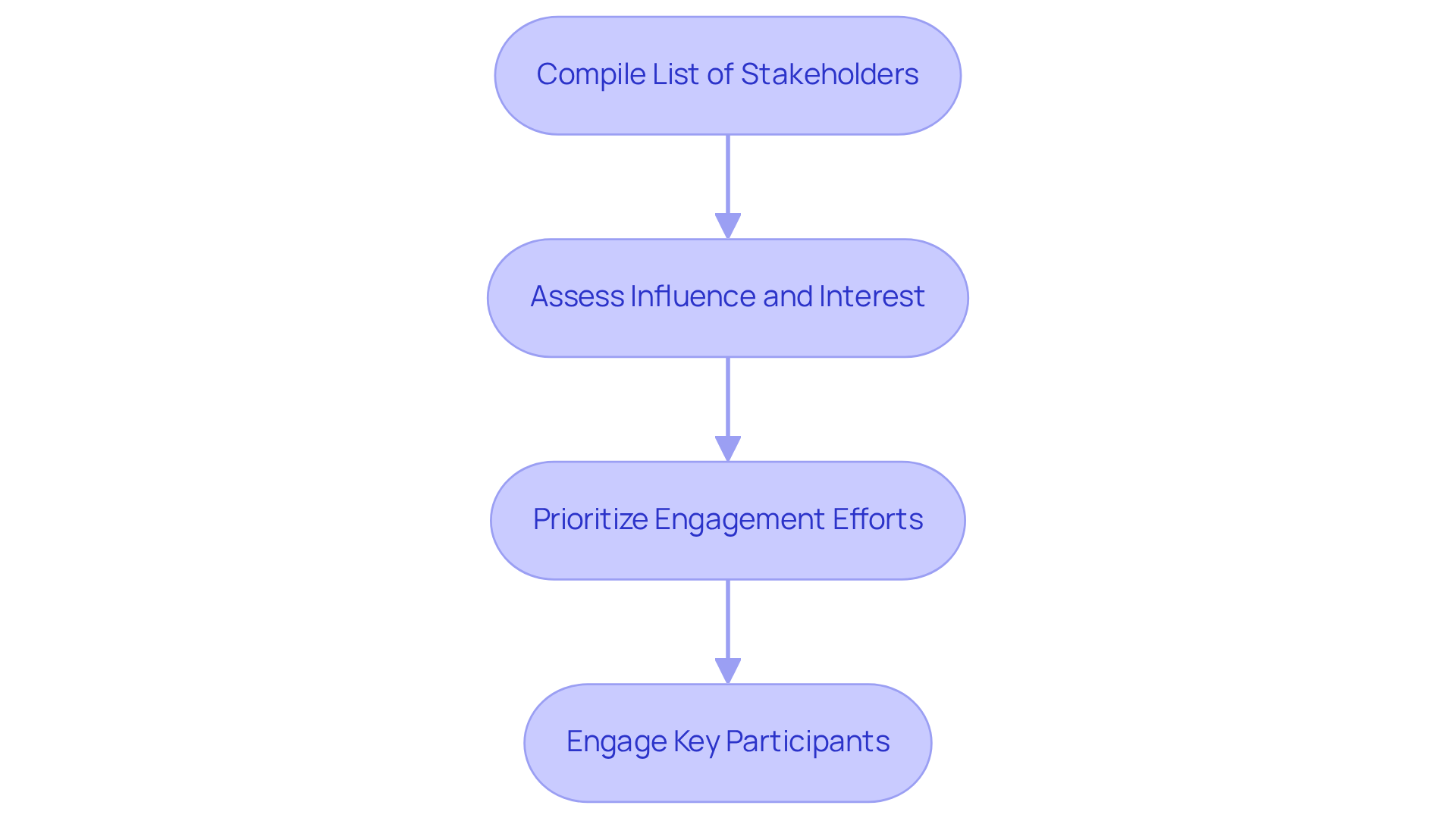
Manage Conflicting Interests: Techniques for Alignment
To effectively manage conflicting interests among involved parties, it is essential to utilize techniques such as and negotiation, which are often explored in on . Begin by encouraging open conversations that allow participants to express their concerns and priorities. This approach not only fosters an environment of trust but also ensures that all parties feel heard and valued.
As Dolores Huerta noted, conflict can be an educational process, underscoring the importance of dialogue in resolving differences. Moreover, can be employed to identify common ground, paving the way for . Recording agreements is crucial for ensuring clarity and accountability as the endeavor advances.
Significantly, around 50% of initiative failures are linked to insufficient participant involvement, highlighting the essential role of in this domain. Research has demonstrated that organizations emphasizing experience a notable rise in participant satisfaction, with enhanced involvement leading to superior outcomes.
By incorporating [competency based interview questions](https://blog.smbdistress.com/10-competency-based-interview-questions-and-answers-for-stakeholder-management) for [stakeholder management](https://zoetalentsolutions.com/stakeholder-engagement-effectiveness), companies can manage conflicts more efficiently, ultimately improving alignment among involved parties and enhancing project success.
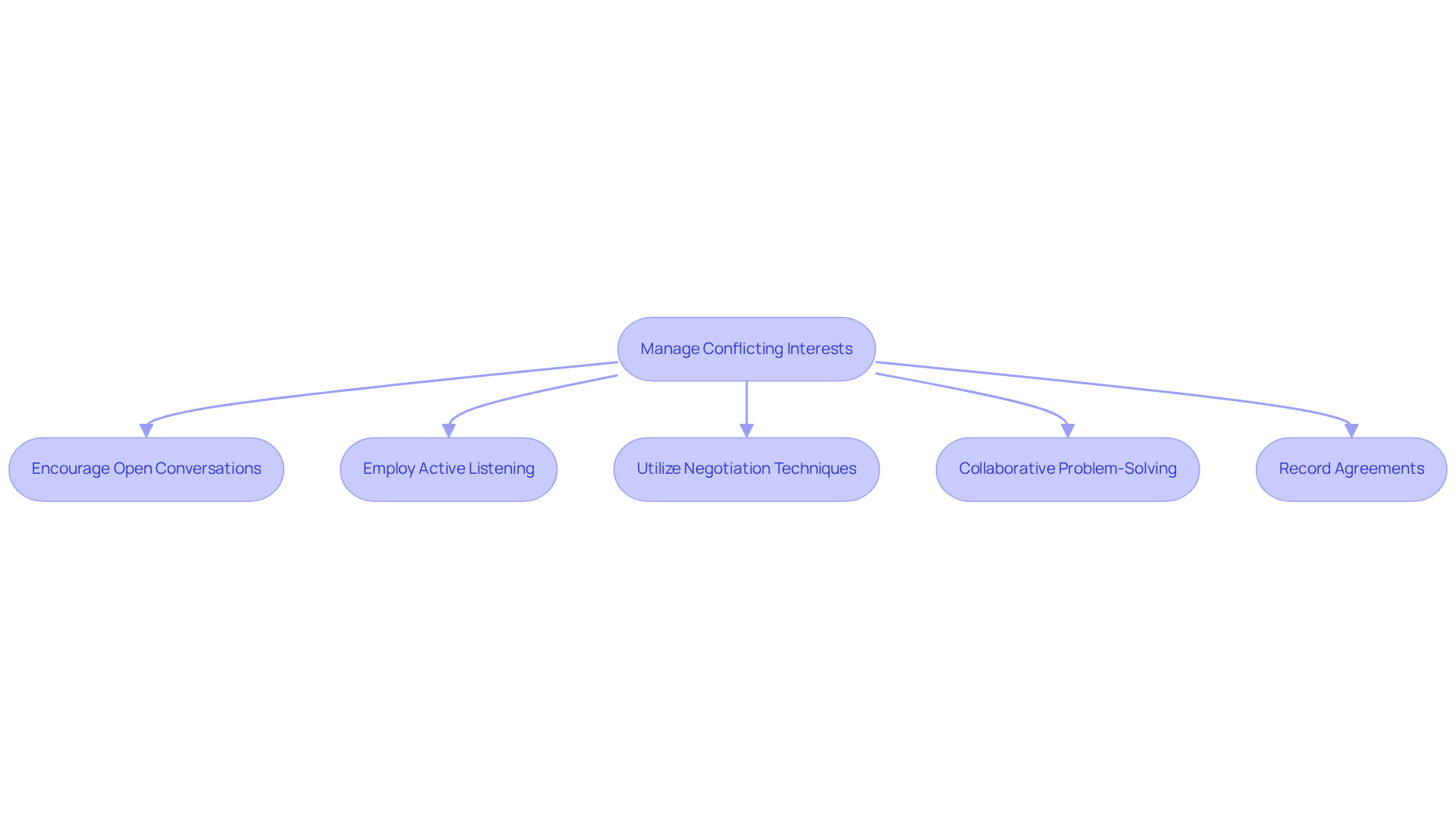
Adjust Communication Style: Engage Diverse Stakeholder Groups
Engaging varied interest groups requires a keen awareness of their interaction preferences and the use of competency based interview questions to accordingly. Some stakeholders may favor , while others might opt for concise summaries or visual presentations. By utilizing a range of interaction channels—such as emails, meetings, and digital platforms—you can effectively accommodate these differing preferences. Notably, statistics reveal that 51% of employees prefer asynchronous like email, whereas 15% lean towards real-time conversations. Customizing your communication method to align with these preferences ensures that all involved parties, particularly in , receive essential information in a manner that resonates with them.
Furthermore, applying , such as competency based interview questions [stakeholder management](https://zoetalentsolutions.com/stakeholder-engagement-effectiveness), actively seeking input, and recognizing the unique requirements of each group, can significantly enhance participant engagement and foster stronger relationships. As Eric Douglas aptly notes, "skilled communicators can adjust their style on the spot, as the situation requires," underscoring the importance of adaptability in message delivery.
Moreover, companies that effectively engage with stakeholders are 50% more likely to achieve their primary objectives, highlighting the critical nature of tailored messaging approaches. It is also vital to recognize that 33% of employees report that a lack of transparent and sincere interactions negatively impacts morale, emphasizing the necessity for .
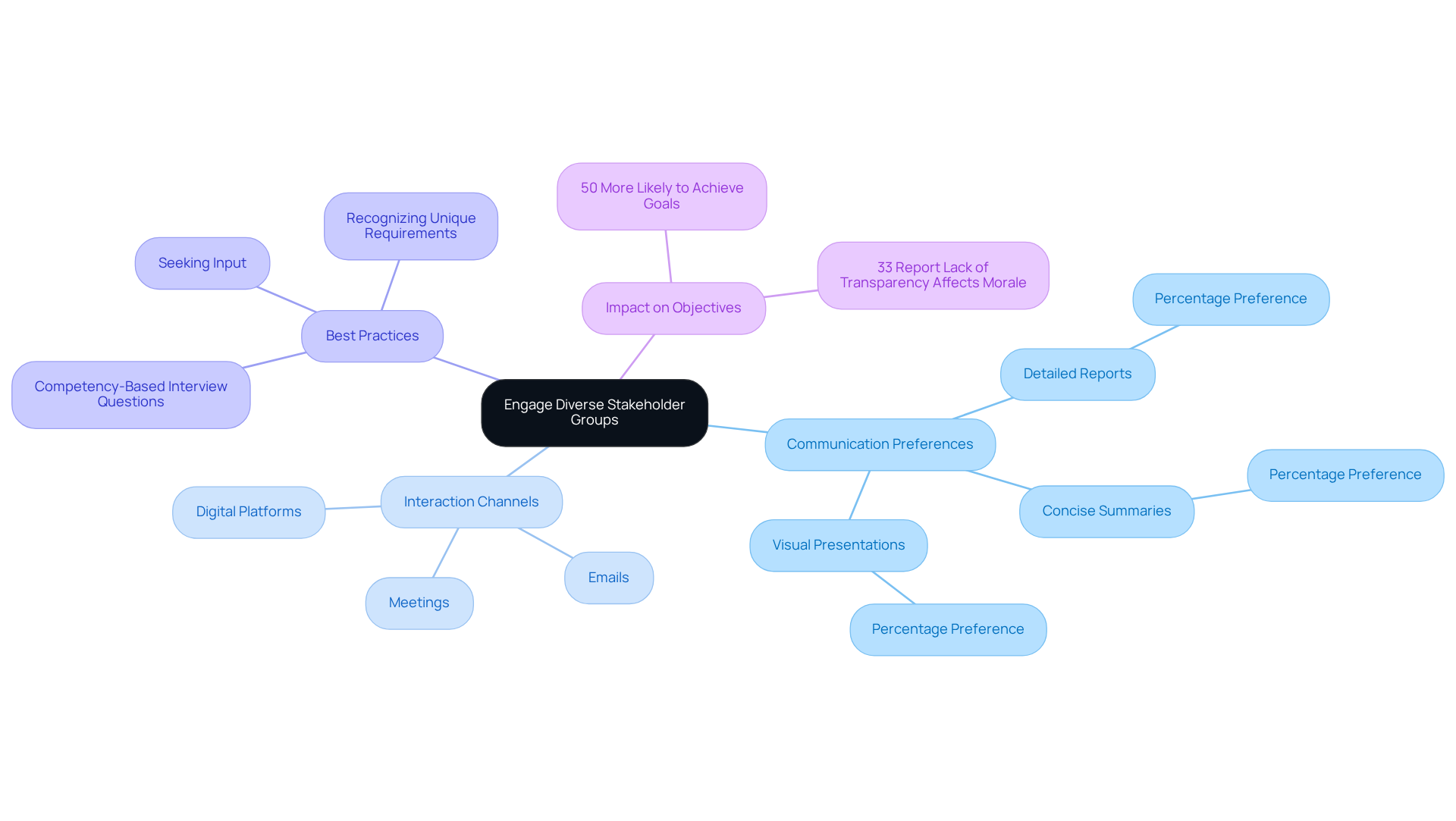
Develop Strong Relationships: Building Trust with Stakeholders
is crucial for and hinges on . Transparency regarding challenges and advancements is paramount, as interested parties highly value being kept informed. Involving these parties early in the initiative not only improves cooperation but also cultivates a sense of ownership, which is essential when addressing competency based interview questions on stakeholder management. Actively seeking their input not only strengthens connections but also demonstrates that their opinions are valued. Establishing a communications plan is essential for detailing , including those responding to competency based interview questions regarding stakeholder management, will be informed about project progress.
At , we initiate every client collaboration with a thorough . This process aligns essential participants and provides a deeper understanding of the business context beyond mere figures. , alongside interim management, offer the framework necessary for effective interaction with involved parties. Engaging in relationship-building activities, such as informal meetings or team-building exercises, can significantly enhance these connections.
Moreover, acknowledging and honoring participant contributions enhances their perceived value, fostering a positive atmosphere that promotes continuous support and involvement. Listening effectively is an essential skill for leaders, further strengthening trust and long-term engagement with partners. Our commitment to implementing insights from the turnaround process ensures that we establish robust, enduring connections with all parties involved.
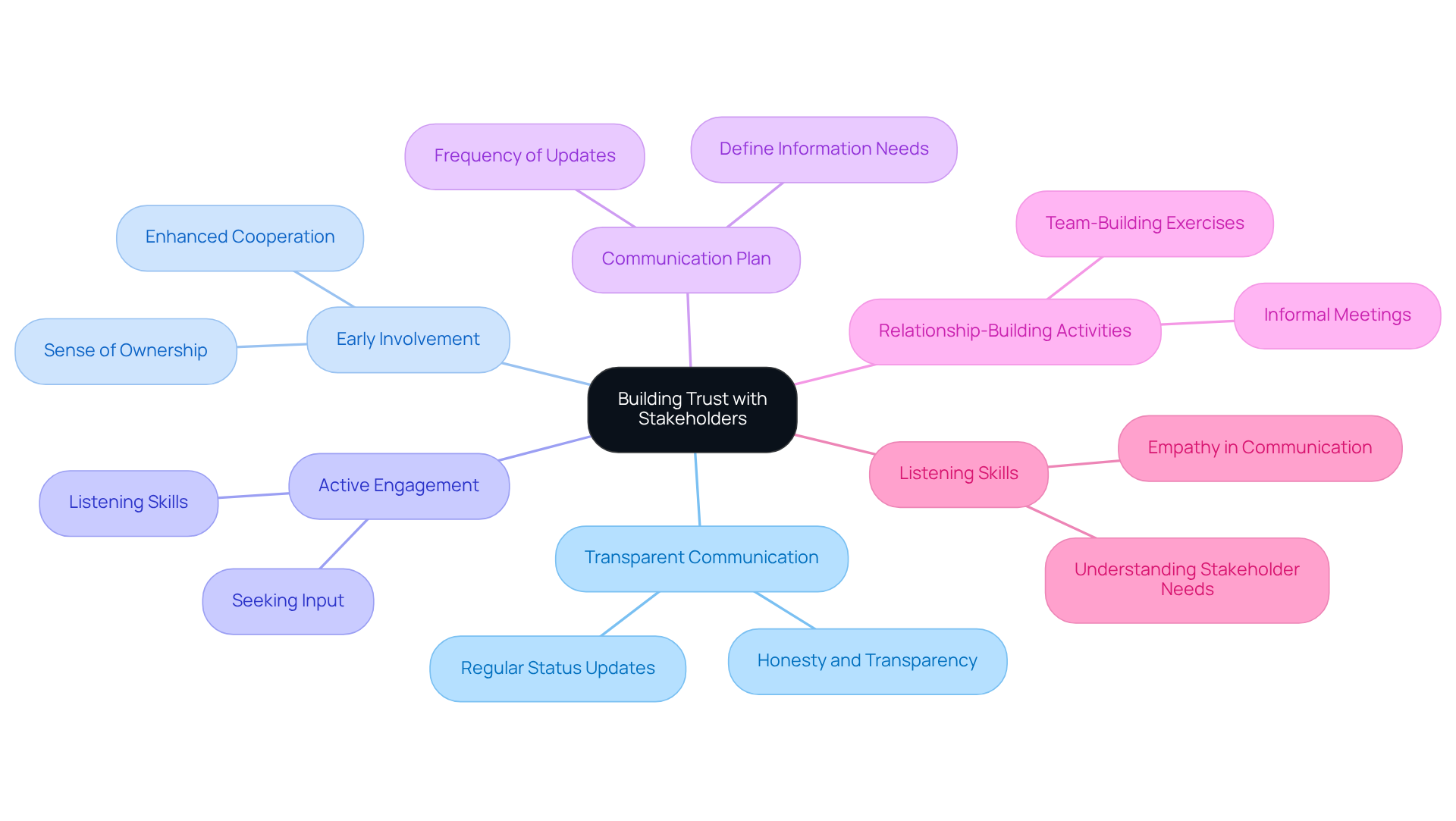
Manage Expectations: Align Stakeholder Needs with Project Goals
Successfully managing of interested parties begins with establishing clear objectives and communicating them from the outset, which can be assessed through . Frequent updates on progress and any changes to the scope are vital for maintaining alignment in the context of [competency based interview questions](https://pmi.org/learning/library/stakeholder-analysis-pivotal-practice-projects-8905) stakeholder management.
Visual aids, such as Gantt charts or dashboards, play a crucial role in , thereby assisting involved parties in understanding how their needs align with overarching goals. Research from HubSpot indicates that initiatives characterized by high levels of participant engagement are 40% more likely to succeed, underscoring the significance of .
Furthermore, according to the Project Management Institute, companies that tend to perform 15% better in their initiatives. By fostering transparency and , managers can ensure that participants feel valued and engaged, which is crucial for competency based interview questions stakeholder management, ultimately leading to more informed decision-making and enhanced outcomes.
to various stakeholders is equally important in competency based interview questions stakeholder management, as it enables managers to address specific needs effectively.
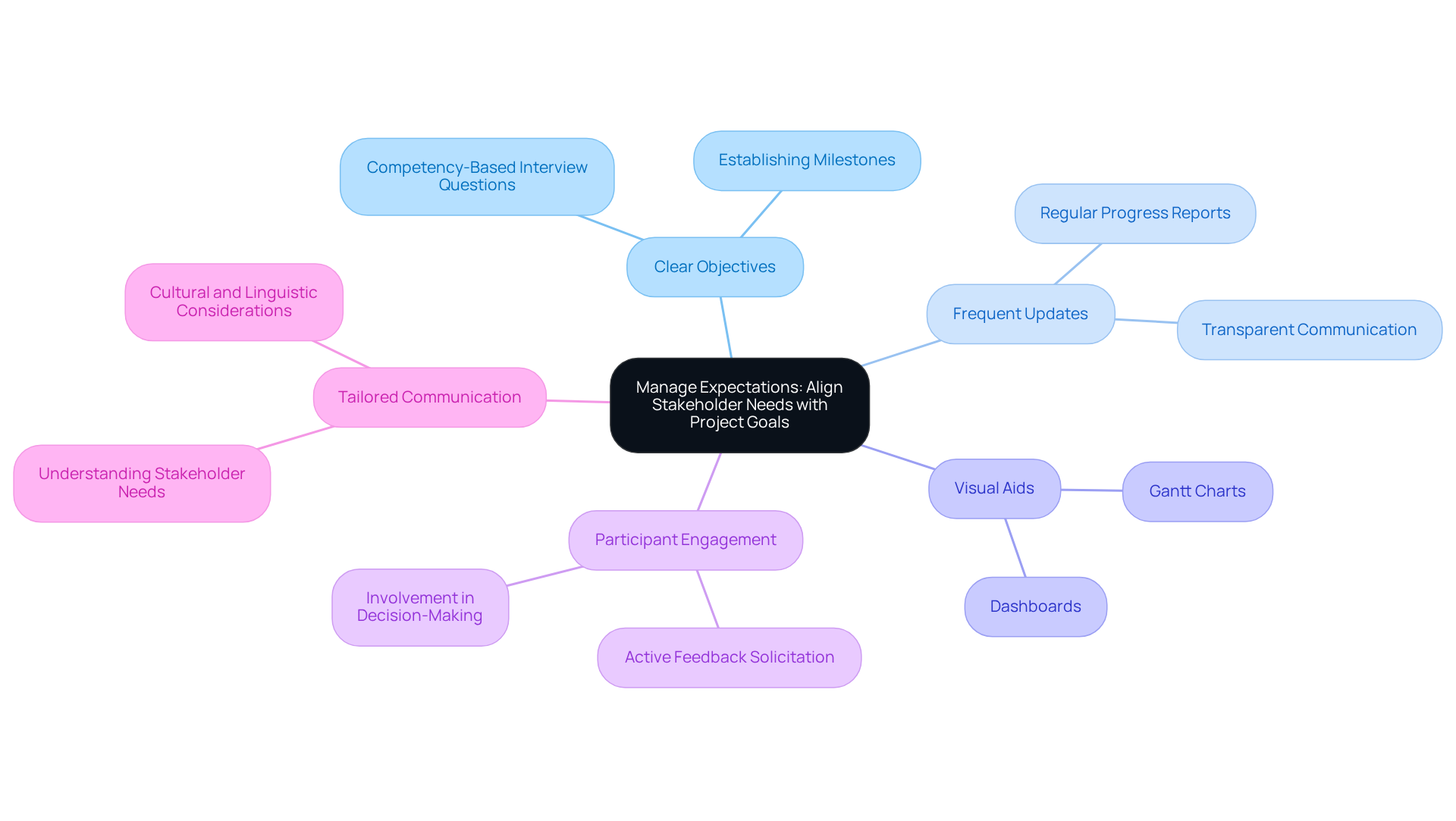
Gather Feedback: Incorporate Stakeholder Insights into Decision-Making
To gather feedback effectively, it is essential to employ :
- Surveys
- Interviews
- Focus groups
Frequent evaluations with stakeholders are crucial for , particularly in the context of . Evaluating feedback aids in . Moreover, have influenced decision-making emphasizes their importance. This method not only improves outcomes but also and trust, ultimately resulting in higher success rates. As noted, organizations that utilize [competency based interview questions](https://dartai.com/blog/why-is-stakeholder-management-important) for stakeholder management experience up to 20% higher , underscoring the critical role of insights from these groups in driving informed decisions.
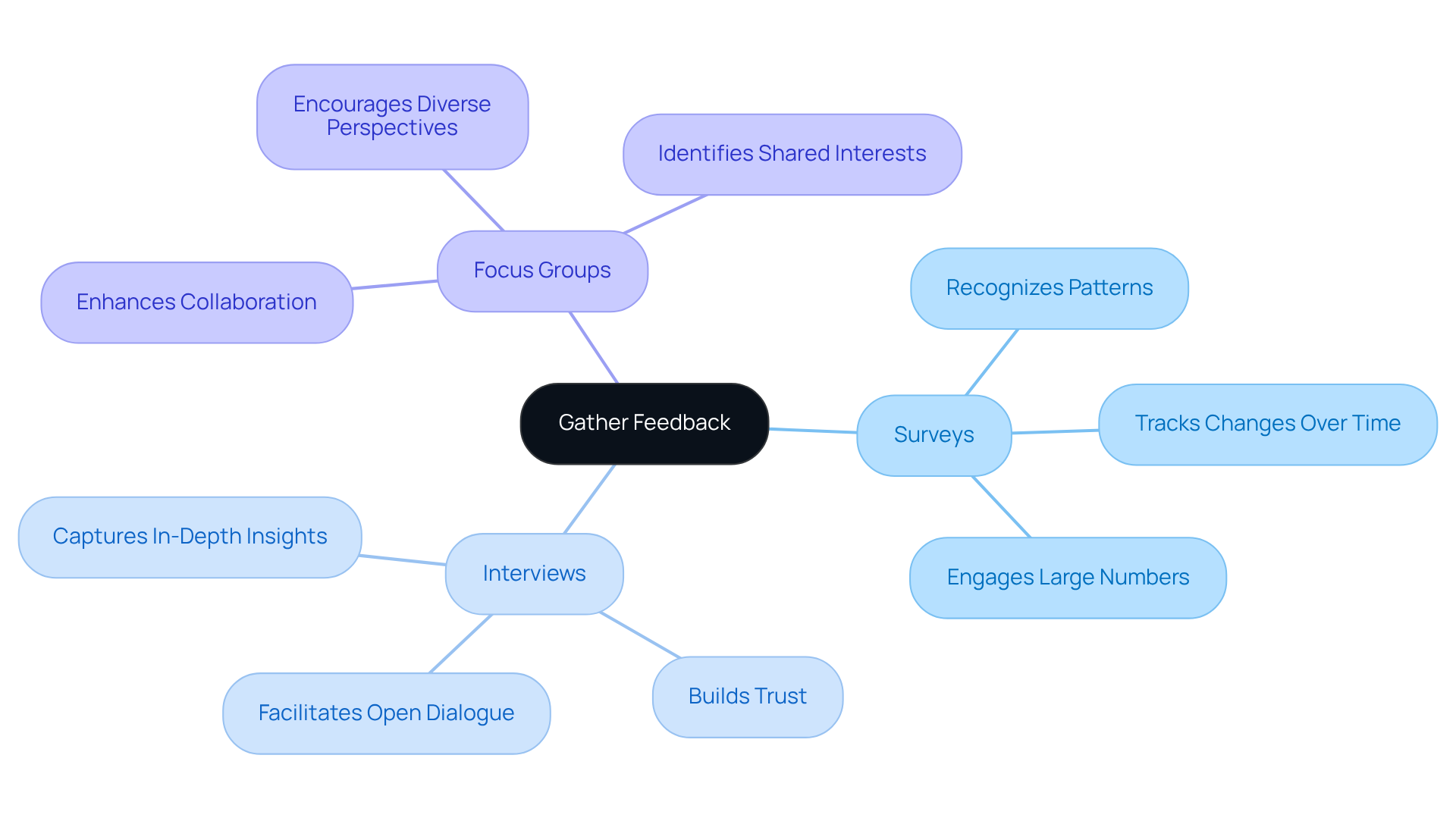
Ensure Engagement: Keep Stakeholders Informed Throughout the Project
To foster robust involvement from interested parties, it is imperative to develop a comprehensive information strategy that delineates how and when these individuals will receive updates throughout the project lifecycle. By employing a diverse array of information-sharing techniques—such as newsletters, progress reports, and meetings—.
Furthermore, ; inviting inquiries and responses not only enhances transparency but also ensures that participants feel valued and involved in the process. According to data from the Project Management Institute, are up to 70% more likely to meet their original objectives, with 78% of projects succeeding when contributors are actively involved, compared to only 40% with lower participation levels. This underscores the vital role of effective communication in managing .
By prioritizing , organizations can , ultimately leading to improved outcomes. Neglecting communication with interested parties may result in project delays, increased costs, and damage to reputation. Therefore, it is essential to devise a plan for engaging stakeholders that incorporates regular updates and feedback mechanisms.
For further insights on enhancing your with interested parties, do not hesitate to reach out to us at . You can at +1 (239) 428-9074 or visit us at 3200 Bailey Ln, Naples, FL 34105.
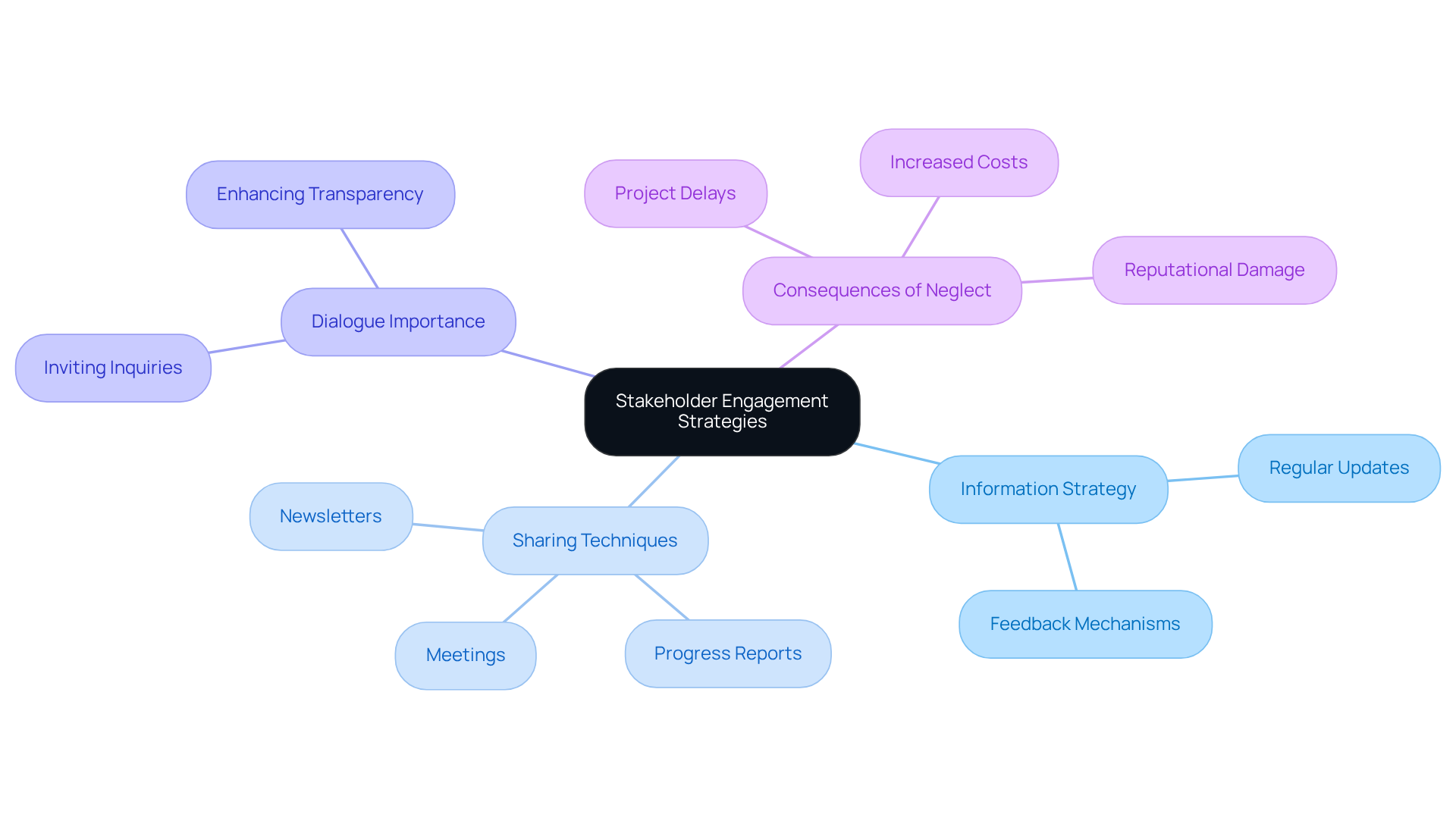
Resolve Conflicts: Strategies for Managing Stakeholder Disputes
To , it is essential to adopt a proactive approach by addressing issues as they arise. Techniques such as mediation and facilitated discussions create a safe space for participants to express their concerns and . Moreover, emphasizing common ground and developing mutually beneficial solutions fosters a culture of cooperation.
Documenting the outcomes of not only ensures accountability but also helps . Involving interested parties in reflective discussions during the monitoring phase can reveal insights that promote , underscoring the significance of ongoing enhancement in .
By prioritizing , organizations can navigate conflicts constructively, turning potential disputes into opportunities for growth and innovation.
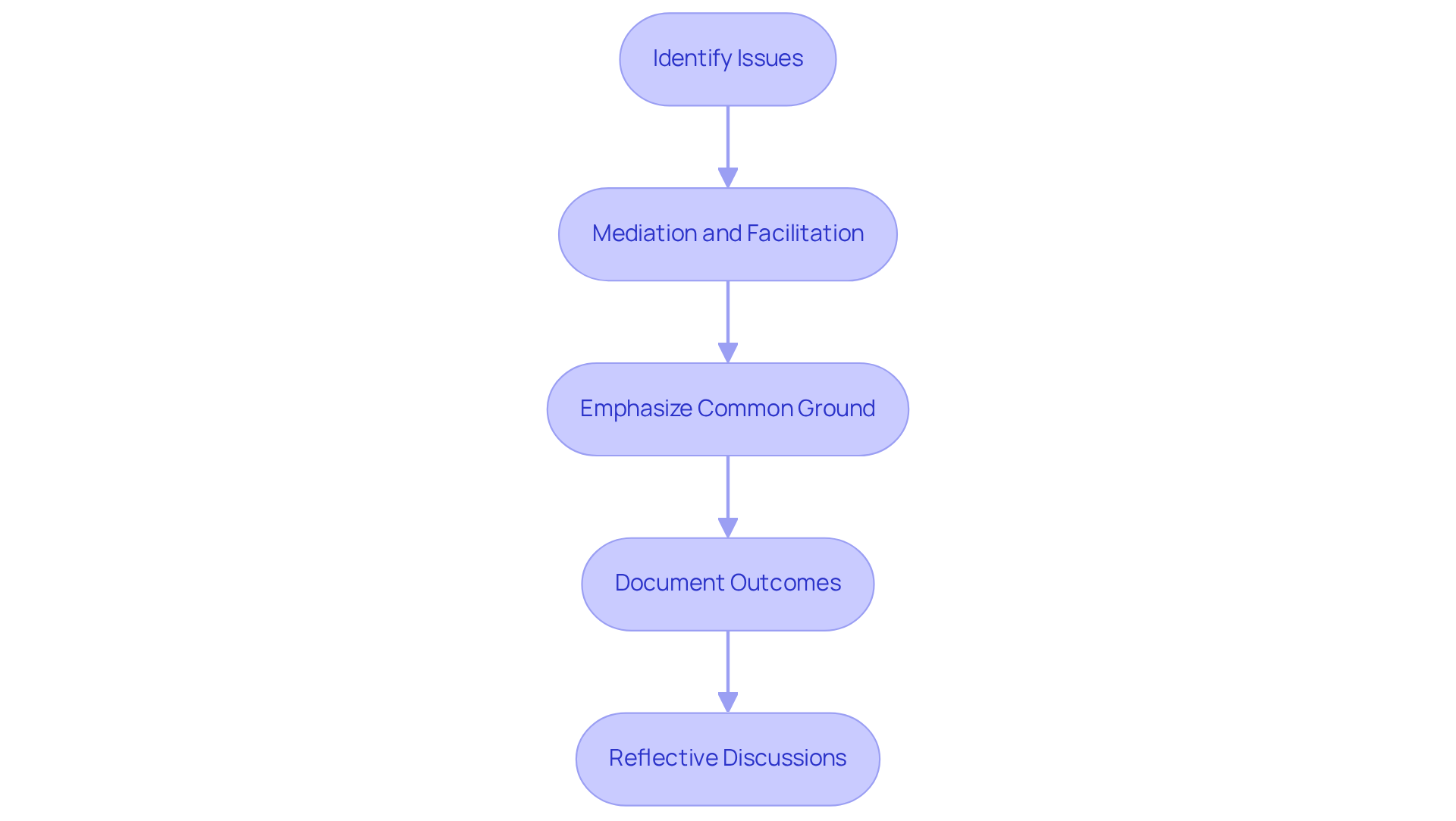
Document Interactions: Maintain Clear Records of Stakeholder Communications
Establishing a robust documentation system is essential for maintaining clear records of communication with stakeholders, particularly in the context of , as well as in the realms of and . This system must effectively capture key interactions, decisions, and agreements, ensuring that all pertinent information is readily accessible to team members. Utilizing or shared documents can facilitate this process, promoting transparency and collaboration.
Moreover, regular evaluations and updates of these records are vital to demonstrate continuous participant engagement and progress, enabling real-time analytics that support efficient decision-making. not only enhances interactions but also cultivates trust and accountability among all parties involved in competency based interview questions related to stakeholder management, ultimately contributing to successful project outcomes.
:
- Categorizing interactions by participant type
- Summarizing discussions
- Documenting follow-up actions
- Actively soliciting feedback from participants to showcase a
Furthermore, can enhance credibility and strengthen relationships, underscoring the importance of and foster collaboration while implementing lessons learned.
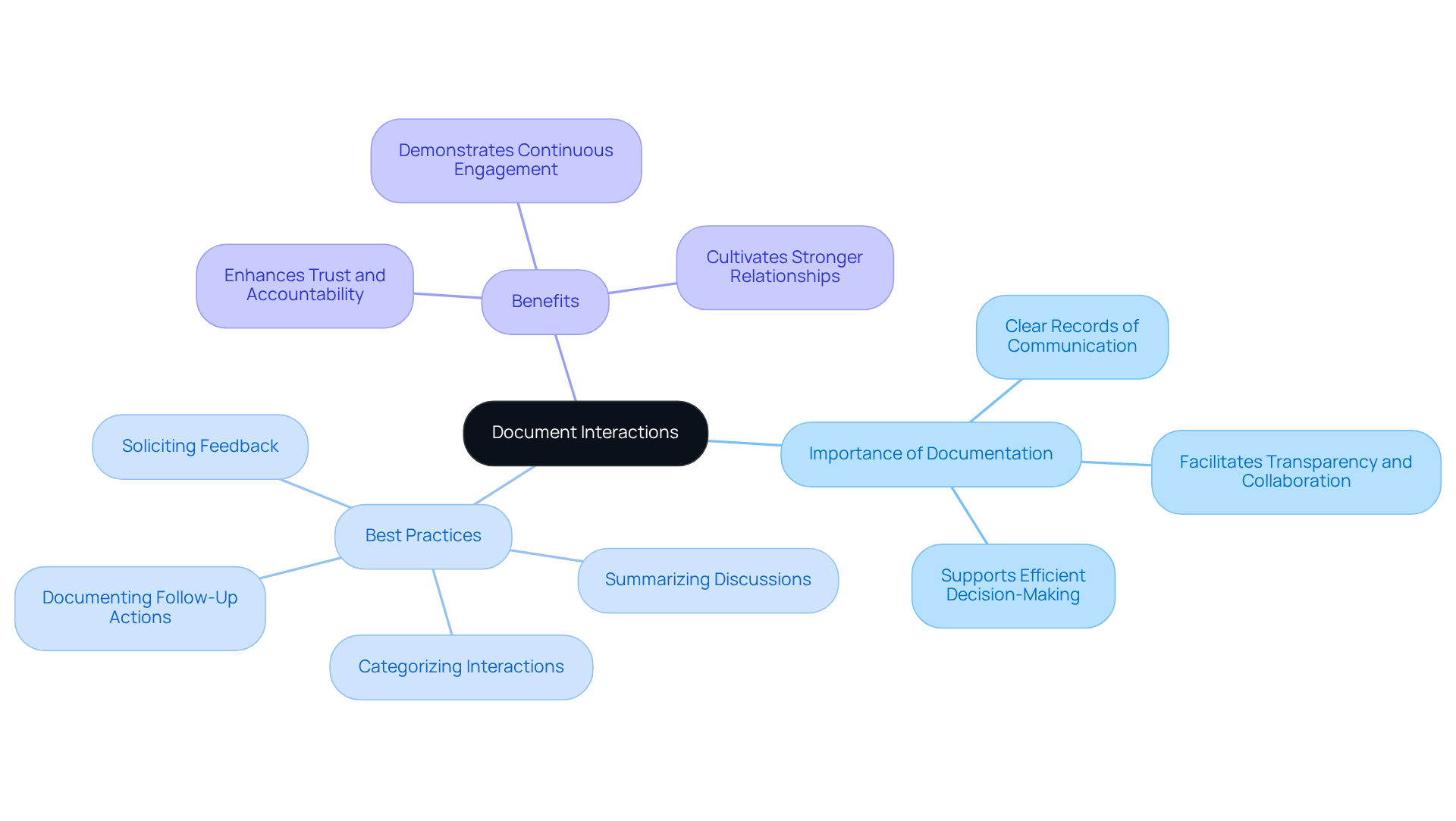
Integrate Practices: Align Stakeholder Management with Project Methodologies
Integrating the management of interested parties with methodologies requires a with the selected management framework—be it Agile or Waterfall. Understanding the distinct requirements and expectations of interested parties is essential, as this comprehension directs . must be woven throughout the lifecycle—during planning, execution, and evaluation. Consistent interaction and feedback systems are vital for maintaining trust and commitment from all involved, allowing for . This proactive approach not only enhances collaboration but also fosters a shared vision among participants, ultimately driving success.
By employing tools such as the Power-Interest Matrix, managers can prioritize engagement with interested parties based on their influence and interest, ensuring that high-power, high-interest individuals receive the attention and communication they necessitate. Furthermore, aligning the interests of involved parties with organizational objectives improves and aids in achieving goals on time and within budget. As Joseph Burke, Senior Planning Consultant, articulates, "The key is understanding that each party has , and adapting your approach accordingly." Incorporating into practices will lead to more successful .
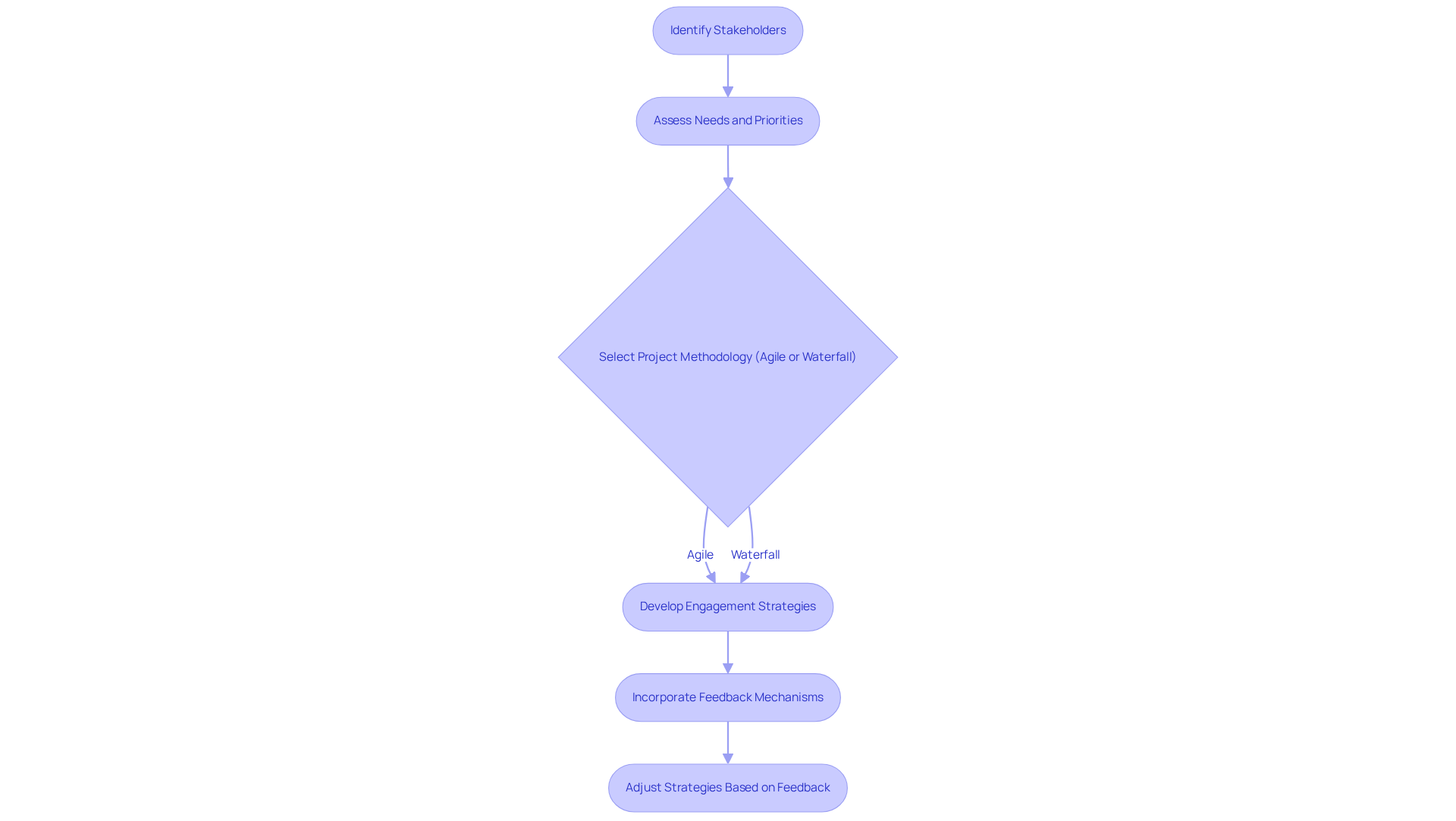
Conclusion
Effective stakeholder management is not merely beneficial; it is essential for the success of any project. This success hinges on the ability to identify, engage, and communicate with all relevant parties. By employing structured strategies and techniques, organizations can foster collaboration, build trust, and align stakeholder interests with project goals. The insights shared throughout this article underscore the critical importance of systematic engagement and proactive management of expectations, which collectively create a positive environment for all involved.
Key strategies discussed include:
- Identifying stakeholders through mapping techniques
- Managing conflicting interests through active listening and negotiation
- Adjusting communication styles to suit diverse groups
Furthermore, the significance of:
- Gathering feedback
- Documenting interactions
- Integrating stakeholder management practices with project methodologies
cannot be overstated. These practices not only enhance participant satisfaction but also contribute significantly to the overall success of initiatives.
Ultimately, the call to action is clear: prioritize stakeholder engagement as a core component of project management. By recognizing the value of each stakeholder's input and maintaining open lines of communication, organizations can navigate challenges effectively and drive projects to successful completion. Embracing these principles will not only improve project outcomes but also cultivate a culture of collaboration and trust that benefits all parties involved.
Frequently Asked Questions
What strategies can be used to identify stakeholders effectively?
Effective stakeholder identification can be achieved by employing mapping techniques such as grids or matrices, compiling a comprehensive list of potential stakeholders, and assessing their levels of influence and interest to prioritize engagement efforts.
Why is it important to refresh the stakeholder list regularly?
Regularly refreshing the stakeholder list is essential because new contributors may emerge during the initiative lifecycle, ensuring that all pertinent parties are acknowledged and involved effectively.
How does participant involvement impact project outcomes?
Participant involvement is critical for successful project outcomes, as organizations increasingly recognize that understanding and addressing the needs of all parties involved leads to enhanced business outcomes.
What techniques can be used to manage conflicting interests among stakeholders?
Techniques such as active listening, negotiation, open conversations, and collaborative problem-solving can be used to manage conflicting interests and identify common ground among stakeholders.
What is the significance of recording agreements in stakeholder management?
Recording agreements is crucial for ensuring clarity and accountability as the initiative progresses, helping to maintain alignment among involved parties.
How does active listening affect participant satisfaction?
Organizations that emphasize active listening experience a notable rise in participant satisfaction, as it fosters an environment where all parties feel heard and valued.
What is the best way to adjust communication styles for diverse stakeholder groups?
To engage diverse stakeholder groups effectively, it is important to be aware of their interaction preferences and use various communication methods, such as detailed reports, concise summaries, or visual presentations, to accommodate these differences.
What statistics highlight employee communication preferences?
Statistics show that 51% of employees prefer asynchronous communication methods like email, while 15% lean towards real-time conversations.
How does effective stakeholder engagement influence project success?
Companies that effectively engage with stakeholders are 50% more likely to achieve their primary objectives, emphasizing the critical nature of tailored messaging approaches.
What impact does a lack of transparent communication have on employee morale?
A lack of transparent and sincere interactions negatively impacts morale, with 33% of employees reporting this issue, highlighting the necessity for effective stakeholder engagement.




